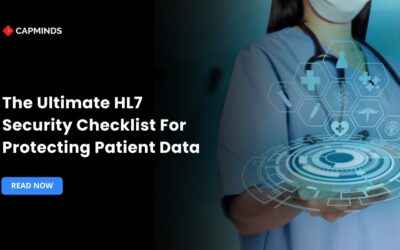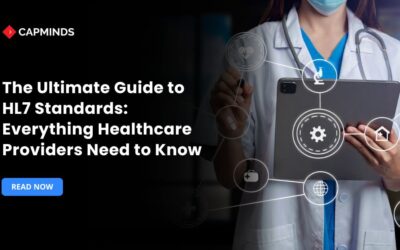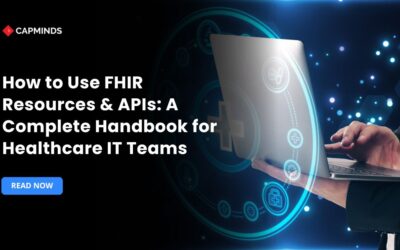HL7 Integration at Scale: Lessons From Multi-System EMR and LIMS Projects
Modern healthcare systems depend on seamless data transmission to maintain smooth treatment, efficient processes, and regulatory compliance. HL7, a worldwide standard for exchanging health information between software programs used by diverse healthcare providers.
Integrating numerous systems brings new obstacles and possibilities. Lessons from large-scale EMR and LIMS initiatives can help us identify patterns, problems, and tried-and-true techniques.
In this blog, we’ll explore how enterprise-scale integration projects work and how healthcare IT professionals should prepare for big projects.
Scope of HL7 Integration
Integrating different EMRs and LIMS systems requires more than simply connecting data points; it also requires synchronizing diverse processes, data models, and regulatory frameworks throughout the enterprise.
Scalability becomes a challenge when each system uses a slightly different standard of HL7. While HL7 v2.x offers a versatile communications architecture, each vendor may implement custom segments or optional fields differently. To address this, interface engines and transformation layers must be used to provide a common term.
- Clear integration goals such as lab order/result exchange, ADT feeds, and clinical decision assistance.
- Identify all source and destination systems, including EMRs, LIMS, billing platforms, and third-party tools.
- Mapping message types to HL7 segments like ORU^R01, ORM^O01, ADT^A01.
1. Standardize Everything
When it comes to large-scale integration, inconsistency is your worst enemy. Different systems frequently have distinct naming conventions, field codes, and even timestamp formats. Without standards, the integration process becomes more error-prone and difficult to scale.
Implementing a central integration engine that functions as a “translator” across systems is considered best practice. This engine converts inbound and outgoing HL7 messages into formats that meet the recipient system’s requirements. Standardizing data formats and adopting uniform identifiers such as MRNs, test codes, or provider IDs may considerably minimize friction.
This does not imply forcing every system to adapt; instead, use mapping logic and configuration templates to impose consistency at the interface layer. To Guarantee Standardization,
- Generate HL7 message specifications and conformance profiles.
- Use master data management to resolve patient and provider identities.
- Enforce name norms for laboratories, departments, and processes.
2. Governance and Documentation
Scalable integration cannot be achieved without effective governance. Every integration project requires extensive documentation, a versioning mechanism for interface setups, and explicit ownership of all endpoints.
Integration initiatives frequently fail over time owing to a lack of openness or the loss of institutional expertise. When new stakeholders join or systems are upgraded, undocumented customizations cause significant disruptions.
Creating reusable templates, keeping precise HL7 requirements for each interface, and documenting every change in a single repository assures consistency and responsibility.
- Assigning integration monitors to each system.
- Developing change request procedures and test plans.
- Maintaining a common knowledge base for HL7 message structure and mapping logic.
Related: Top Middleware Tools for HL7, CCD, and Claims Integration
3. Choose the Right Interface
Selecting the appropriate interface engine may make or break your HL7 integration at scale. Advanced engines, such as Mirth Connect, offer facilities for message transformation, routing, alerting, and monitoring, all of which are essential when interacting with various systems.
To properly use these platforms, teams must create modular, reusable code components and follow version control standards. An ORM^O01 message for lab orders should employ a common transformation script across all EMR-to-LIMS connections, with project-specific parameters.
Interface engines function as audit and compliance checkpoints. Healthcare organizations may ensure traceability and rapid incident handling by centralizing communication logs and mistakes.
- Centralized control over message routing and delivery
- Integrated message queueing, retries, and alarms
- Simplified adherence to HIPAA, GDPR, and internal audit policies
4. Continuous Monitoring, Optimization, and Scaling
HL7 integration is not a one-time deployment; it needs continuous performance monitoring and tuning. As data volume increases and clinical workflows change, connections must be optimized for latency, throughput, and dependability.
Monitoring tools can track message delivery status, detect bottlenecks, and alert on message failures. These insights enable IT teams to tackle issues before they have an impact on patient care or revenue cycles. Scalability should be considered from the start.
This involves utilizing stateless interface designs, modular message processing algorithms, and cloud-native deployment choices for elasticity. Key Optimization Strategies includes
- Set up real-time dashboards for interface health and throughput.
- Conduct frequent audits on data consistency and message error rates.
- Use containerization and orchestration, such as Docker + Kubernetes, for scalable deployment.
5. Collaborate Across Teams
HL7 integration at scale requires tight coordination across clinical, IT, and administrative teams. Misalignment of data expectations, process logic, or language might result in costly delays.
Engaging stakeholders early enables integration teams to capture real-world use cases and edge situations. This results in more accurate mappings, improved testing situations, and smoother go-lives.
Regular collaborative workshops, message flow walkthroughs, and shared dashboards promote departmental openness and confidence, particularly when linking LIMS systems that service different hospital departments.
- Schedule integration planning workshops with clinical leaders and lab supervisors.
- Validate message samples against live workflows and not just test data.
- Maintain open communication channels like Slack, MS Teams amongst teams.
Simplify Enterprise HL7 Integration with CapMinds’ Interoperability Solutions
At CapMinds, we empower healthcare organizations to streamline their multi-system interoperability challenges through robust HL7 integration and enterprise-scale EMR, LIMS projects.
Whether you’re connecting lab networks, synchronizing hospital EMRs, or modernizing your data architecture, our solutions are built for speed, accuracy, and compliance.
Our HL7 and enterprise integration services include:
- End-to-End HL7 Integration – Custom HL7 v2.x/v3 and FHIR support for labs, EMRs, billing, and third-party systems
- Multi-System EMR & LIMS Connectivity – Scalable architecture for complex health IT ecosystems
- Interface Engine Deployment – Mirth Connect implementation, transformation logic, and message routing
- Governance & Documentation Support – Conformance profiles, audit trails, and version-controlled specifications
- Continuous Monitoring & Optimization – Real-time dashboards, automated alerts, and performance tuning
Partner with CapMinds to build secure, scalable, and future-ready healthcare data exchanges.
Let’s simplify your HL7 journey. Start with a strategy session today.




